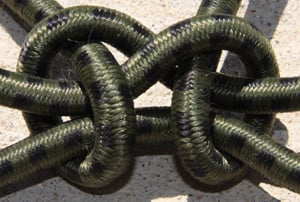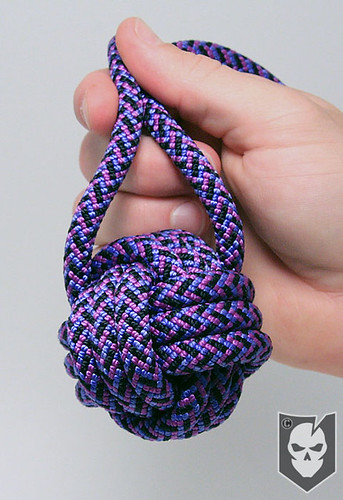Knot of the Week: Intro
Knot of the Week: Intro
 So honestly, how many times have you been in a situation where you’ve had a rope in your hands trying to tie something off or lash something down and think, crap, I wish I would have been a Boy Scout… Well, stress no more!
So honestly, how many times have you been in a situation where you’ve had a rope in your hands trying to tie something off or lash something down and think, crap, I wish I would have been a Boy Scout… Well, stress no more!
ITS is proud to announce a new weekly feature where we’ll feature a review of a different knot by providing step-by-step tying instructions and listing practical (and tactical) uses of the knot. In addition, each knot will be assigned a rating from 1-5 (1 representing the lowest score) based on the following four properties:
Strength – All knots will weaken the strength of a rope, however, there are knots that are stronger than others. The scale here will reflect how strong the rope remains with the specified knot.
“A rope practically never breaks within a knot. . . . It appears to be true that a rope is weakest just outside the entrance to a knot. . . . On testing [the Bowline Bend] I could find no tendency to break at the point of crossing. The material broke each time at a point just outside one of the Bowline Knots.”
— Clifford Ashley, 17, 30 Ashley Book of Knots
Security – The security scale refers to how well the knot will stay tied, and resist coming loose under a normal load.
Stability – Stability refers to how easily the knot will come untied under an abnormal load (i.e. the knot being pulled in a direction it was not intended to) A lower score here will mean an unstable knot.
Difficulty – The lower the number here indicates the ease at which one can tie the knot.
- Beginner (1)
- Novice (2)
- Advanced (3)
- Expert (4)
- Professional (5)
The chart below is the legend for each of the four properties.
Strength/Security/Stability/Difficulty the numbers here will appear next to the title of each knot and indicate the scale of each property 1/2/3/4
The first knot in our “Knot of the Week” series, will be the Square Knot. Visit us on Monday to read all about it!











Discussion